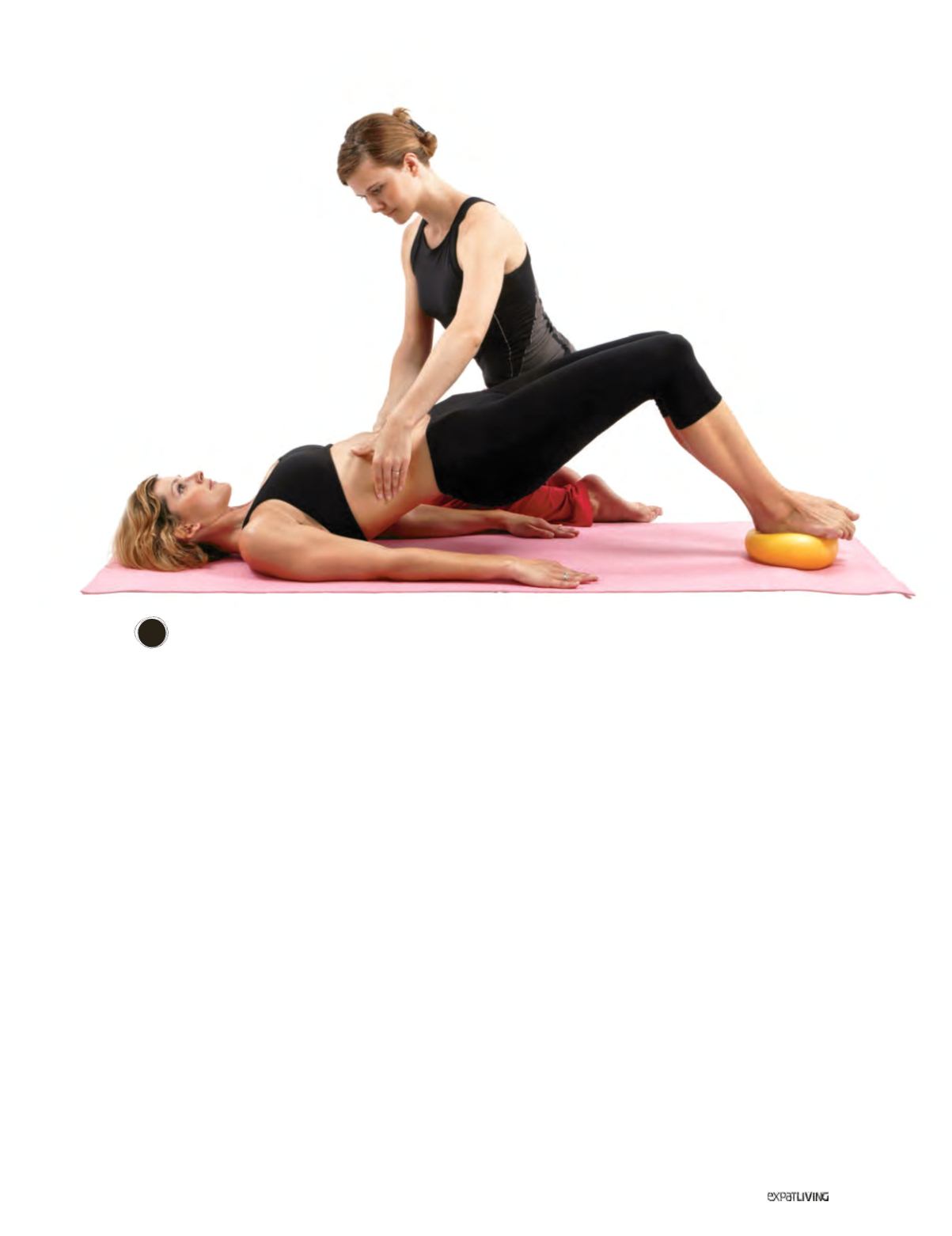

BONE HEALTH
291
May15
AUDREY D’COTTA, studio director of
The Moving Body
, heads up
a large team of specialists in various complementary fields – from
Pilates, CoreAlign and Gyrotonic to physiotherapy, massage and
more. Who better to address the whys and hows of achieving a
stronger frame?
What’s so important about having strong bones and
joints?
Together, and in conjunction with healthy musculature, bones provide
the support and mobility that our bodies need to carry out our daily
functions and move us through various activities. Keeping up skeletal
strength and bone health is an important strategy for remaining active
and injury-free for as long as we can.
At what age do we need to start paying attention to bone
health?
From very young. Our bodies build the greatest amount of bone
from childhood until we attain peak bone mass somewhere between
the ages of 18 and 25. So, it’s vital for children and teens to eat
well and stay active – and important that we work to maintain the
bone mass we have as young adults to help support us through our
later years. For this purpose, both weight-bearing and resistance
exercises are vital.
No one wants their new strengthening regime to be scuppered by
injury, though. Our excellent team of physiotherapists and instructors
are able to assess your current needs and abilities in order to
customise a safe and effective exercise programme for strengthening
the body, establishing efficient movement patterns, and aligning the
joints and the skeleton.
What kind of weight-bearing exercise do you
recommend?
Weight-bearing exercise can be defined as moving
against gravity while in an upright position. At The
Moving Body, we offer a functional training programme
on an apparatus called the
CoreAlign
, designed to
improve posture, balance and functional movement.
It consists of two tracks that allow the legs to work
independently of each other. A ladder at the front of
the tracks helps with balance, and there’s a support
for performing stretches, making this an extremely
safe environment for anyone who feels they may be
at risk of falling.
How would you define resistance exercise?
Resistance exercise is any exercise that forces the
skeletal muscles to contract. It involves the muscles
pulling on the bone to create tension, which also
fortifies the bone. The resistance can come from
weights, elastic bands or springs, for example. But you
can also consider your own body weight as resistance
in some movements, for instance a push-up.
The Moving Body also offers low-impact forms of
resistance exercise via
Pilates
and
Gyrotonic
. Both of
these programmes emphasise good posture, alignment
and balance as well as full-body integratedmovements.
Importantly, each of these two programmes helps
establish good form for weight training, so that the
forces are ideally transmitted through a well-aligned
spine and hips.
#1
Makes You Stronger
Peter Kremzar | Dreamstime.com



















